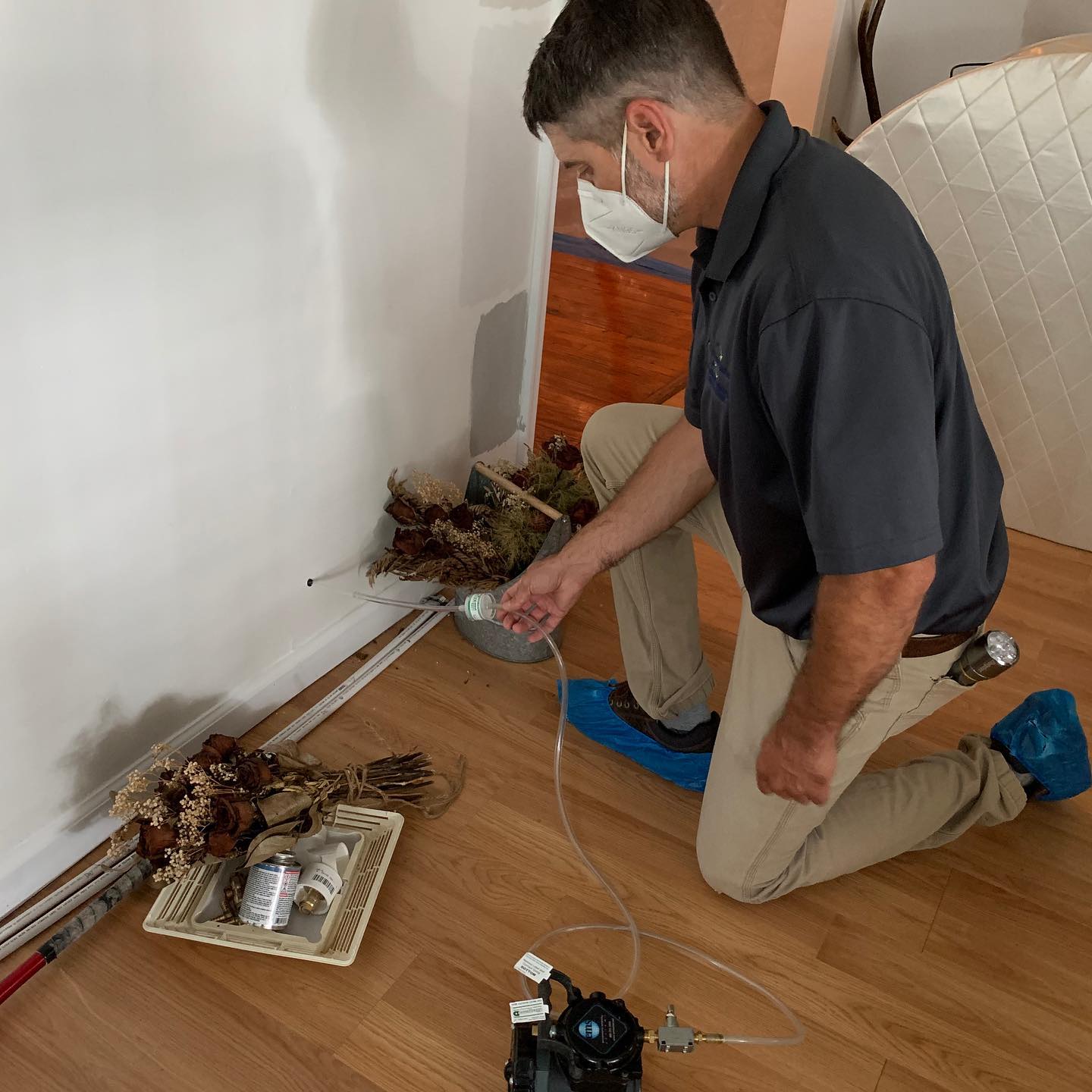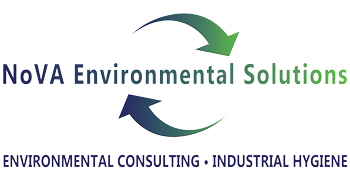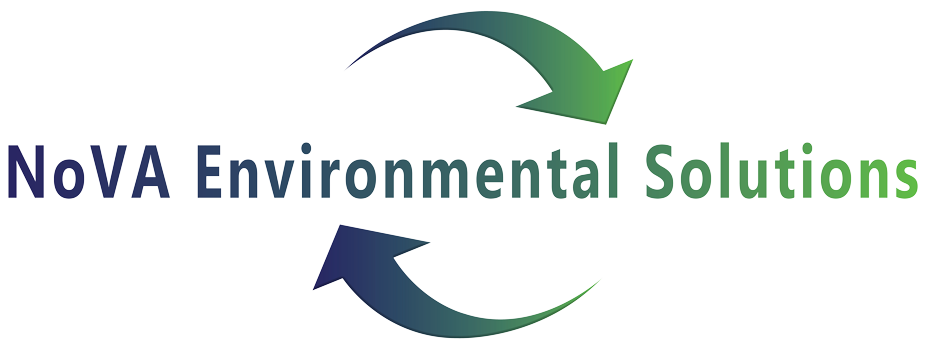Chances are you have probably heard about “Toxic Black Mold” in the media, from friends, or from a contractor that you have worked with. With the word toxic in the equation, it has developed caused mold growth to have a certain stigma as something to be feared. Stachybotrys Chartarum is the specific species of mold growth that people are referring to when they are knowingly talking about “toxic black mold”. This specific species stands out from the rest as it can release mycotoxins into an indoor environment which can lead to some serious health complications. Stachybotrys is a species of mold that is usually accompanied by others including but not limited to Penicillium, Aspergillus, Cladosporium, and Chaetomium. This is usually the case as Stachybotrys is a slow growing mold and the aforementioned are more common and faster growing.
The term “toxic mold” is somewhat misleading and has led to misunderstandings and confusion regarding the health-related dangers of mold. In high enough concentrations, all molds — toxic or otherwise — may cause health problems. As a result, some sources refer to all mold as “toxic mold.”
Strictly speaking, however, there is no such thing as toxic mold. A few forms of mold are called “toxigenic,” meaning that under certain conditions they can produce small molecular toxins, called “mycotoxins.” These mycotoxins are usually spread by way of the mold’s spores and may be the cause of potentially serious health problems if ingested in sufficient quantities over time.
In contrast with mold in general, which is to be found virtually everywhere, toxigenic molds are less common. Two of the best-known examples of so-called “toxic mold” include:
Stachybotrys chartarum – Sometimes called S. chartarum or Stachybotrys atra, and popularly known as “black mold,” this toxigenic mold is a greenish-black fungus that requires a moist environment in which to grow and is most commonly found in flood-damaged buildings. The mycotoxins produced by Stachybotrys chartarum are potent, but there is some evidence that only a few strains of Stachybotrys chartarum are toxigenic, indicating that this particular type of “toxic mold” may be quite rare.
Aspergillus – Aspergillus is a family of molds, and only some aspergillus molds are toxigenic. The mycotoxins produced by toxigenic strains of Aspergillus are less potent than stachybotrys chartarum mycotoxins, but infestations of Aspergillus mold are probably far more common. Aspergillus may be found in any of the mold-friendly environments discussed above. Though some people become ill from these mycotoxins and toxigenic mold, many of the more common health problems thought to be potentially mold-related may be caused by mold that is not strictly speaking toxic (or toxigenic).
Health problems can sometimes be an indicator that there’s mold present in your home. Sensitive individuals sometimes exhibit symptoms like sore throat, stuffy nose, eye irritation, wheezing and rashes. In more extreme cases, they might endure fever, shortness of breath, and mold-related lung infections when exposed to a mold-laden environment. But even if no one is sick at your house doesn’t mean you don’t have mold.
If you believe that you or someone in your family has symptoms that you suspect might be linked to mold exposure, you should consult a physician who has experience with mold exposure illnesses. If mold testing was performed in the house or building, bring a copy of the report, including any accompanying data tables to your doctor. Keep in mind that many symptoms associated with mold exposure can also be associated with other environmental problems. Tell your doctor about the symptoms, when they began, and the period of time you think you were exposed to mold. An indoor mold inspection will be important in finding mold contamination sources and suggesting how to solve the problem.
The Centers for Disease Control and Prevention (CDC) or other governmental agencies have yet to establish guidelines for evaluating the health risks of specific mold concentrations or strains in buildings, but they have stated that the most prudent practice when discovering mold in your home is to remove it. All mold varieties should be considered the same when evaluating their potential risk to your family’s health [source: CDC].
Asbestos is a naturally occurring mineral that was mined heavily throughout the industrial age and is still mined in some countries throughout the world. Asbestos was widely used throughout the industry because of its tensile strength, resistance to fire and chemicals, and in its natural form could be woven into cloth like materials. It is the only known substance on the planet that will not burn.
Most asbestos containing products were phased out during the 1970s. Some products can still be purchased that contain asbestos, especially those manufactured overseas where regulations are not as stringent. In order to liquidate stock, some products that were manufactured in the 1970s were still sold, but no longer produced, in the 1980s.
Current rules and regulations state that a homeowner (i.e., the actual owner of the property) is allowed to remove asbestos from his/her home. Prior to doing so, you must check with all local, state, and federal agencies for proper transport and disposal methods for these materials. However, if you are not familiar with asbestos removal, we strongly recommend that as much research be done as possible prior to any impact of these regulated materials. Without doing so, there is a high probability that you could expose yourself, family, friends, or others to hazardous concentrations of asbestos. We never recommend that a homeowner perform removal activities themselves due to the possibility of exposure.
Some common indoor air pollutants include:
· Biologicals: Bacteria, mold, viruses, animal dander, pollen, dust mites. These are more likely to be a problem in buildings with high humidity, or water-damage.
· Carbon Monoxide: From unvented gas heaters; leaking chimneys or furnaces; gas stoves; automobile exhaust. Low levels can cause headaches, flu-like symptoms. High levels can be fatal.
· Respirable Particles: From fireplaces, wood stoves, kerosene heaters, and smoking.
· Organic Gases: From household products including: paints, paint strippers, and other solvents; wood preservatives; aerosol sprays; cleansers and disinfectants; moth repellents and air fresheners; stored fuels and automotive products; hobby supplies; dry-cleaned clothing.
· Formaldehyde: Usually from pressed wood products (hardwood plywood paneling, particle board, fiberboard) and furniture made with pressed wood products; or urea-formaldehyde foam insulation.
· Pesticides: Products used to kill household pests, and lawn and garden products that may drift or be tracked into the house.
According to Virginia code § 22.1-289.052. Asbestos inspection required for child day centers., “The Superintendent shall not issue a license to any child day center that is located in a building built prior to 1978 until he receives a written statement that the building has been inspected for asbestos, as defined by § 2.2-1162, and in accordance with the regulations for initial asbestos inspections pursuant to the federal Asbestos Hazard Emergency Response Act, 40 C.F.R. Part 763 — Asbestos Containing Materials in Schools.”
At certain levels, lead can be harmful to human health. According to the World Health Organization (WHO) and the US Centers for Disease Control and Prevention (CDC), lead exposure can affect nearly every system in the body, especially in children. Children with high levels of lead in their bodies can suffer from brain / nervous system damage, behavior and learning problems, hyperactivity, slowed growth, hearing problems, headaches. Adults with high lead levels can suffer from reproductive problems, high blood pressure, hypertension, nerve disorders, memory and concentration problems, muscle and joint pain.
- A critical question to consider in terms of lead and human safety is whether or not children will be occupying the space, becuase as stated earlier, there is no safe BLL in children. Lead paint can still be found in millions of homes and buildings, often under layers of new paint. According to the EPA, unless the paint is deteriorating or subject to frequent wear and tear (i.e., door jams, windows/windowsills, stairs), it often does not present a serious problem. However, renovation and repair projects can disturb lead paint and lead dust, and precautions should always be taken to minimize exposure.
To test for lead paint and lead dust in a home or building (especially if built before 1978 and/or if occupied by children), it is very important that you call a certified lead inspector or risk assessor If you find that you have lead paint which you need to remove, be sure you hire a Lead Safe Renovator. We do not recommend DIY (do-it-yourself) for Lead Paint, but if you do decide to tackle the project yourself, make sure you follow the safety protocols recommended/required in your state. Here is a good resource for homeowners: EPA Pamphlet “Protect Your Family From Lead”: https://www.epa.gov/sites/production/files/2020-04/documents/lead-in-your-home-portrait-color-2020-508.pdf
- Virginia does not have lead laws like the District of Columbia and Maryland. Landlords are not required to inspect their properties for lead-based paint.
Federal law requires owners of pre-1978 homes to disclose the presence of lead-based paint. The disclosure must happen before renting or selling the home. Owners must provide specific warning statements about lead-based paint in their sales contracts and leases.
Landlords should provide the following information to their tenants.
- Lead hazard information pamphlet
- Disclosure of any known lead-based paint or lead-based paint hazards
- Copy of signed written statement acknowledging receipt of information with tenant’s signature.
Federal regulations do not require that a Phase I ESA be conducted on every commercial real estate transaction. However, CERCLA liability protection is only afforded when such assessments are initiated prior to the purchase of a property. Property use and history of use dictate whether or not a bank will require a Phase I ESA before offering a loan. If paying cash, a prospective buyer should also consider these same conditions in deciding to conduct a Phase I ESA. Since everyone’s risk tolerance is different, there are some gray areas. There are also some occasions where a Phase I ESA is clearly warranted.
A Phase I ESA should always be obtained if:
- The business sells, supplies, or dispenses fuel, gasoline, heating oil, and other hazardous materials.
- If there are actual or suspected hazardous substances on the property (or in the subsurface soil and/or groundwater), either from current, past, or future activities on the property itself, or current or past activities on surrounding properties.
- There is a known or potential threat to the environment or potential exceedance of any cleanup standard.
- There is an issue that has been, currently is, or will potentially become the subject of an enforcement action under Federal or state laws, especially cleanup-related and waste-related state laws.



